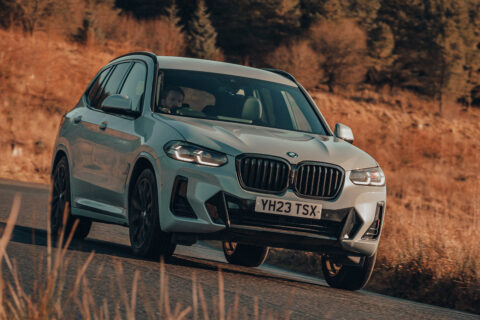
The character of the 20d engine – codenamed B47 – hits something of a sweet spot for cars of this type, although it’s not perfect.
Paired with the eight closely spaced ratios of the short-shifting Steptronic transmission, it’s nicely refined under load and develops enough accessible torque to guarantee that progress remains unflustered and discreet almost all of the time. It is, in a word, amenable.
Our road test data indicates this engine matches Audi’s Q5 almost exactly to 60mph, 100mph and over a standing quarter mile and easily outstripped the mark of a Jaguar F-Pace.
The 30d adds a useful slug of torque, power and performance. It’s more than 2.0 seconds quicker to 62 and is wonderfully usable in day-to-day driving. The six-cylinder unit delivers smooth progress, making motorway journeys effortless.
Like with many PHEVs, the 30e behaves differently depending on its charge levels. With a full battery it feels rapid, the electricity filling in the torque gaps of the petrol engine.
If the battery is empty the engine feels strained and performance, as well as MPG, plummets.
Even in manual-shift mode, the automatic gearbox shifts up ahead of the redline, suggestive of a dearth of efficiency in the higher reaches of the rev range, despite the use of a variable-geometry turbocharger.
With all-wheel drive, limited power and plenty of tyre contact patch through which to drive, traction was never a problem for our test cars, even in slightly slippery conditions.
